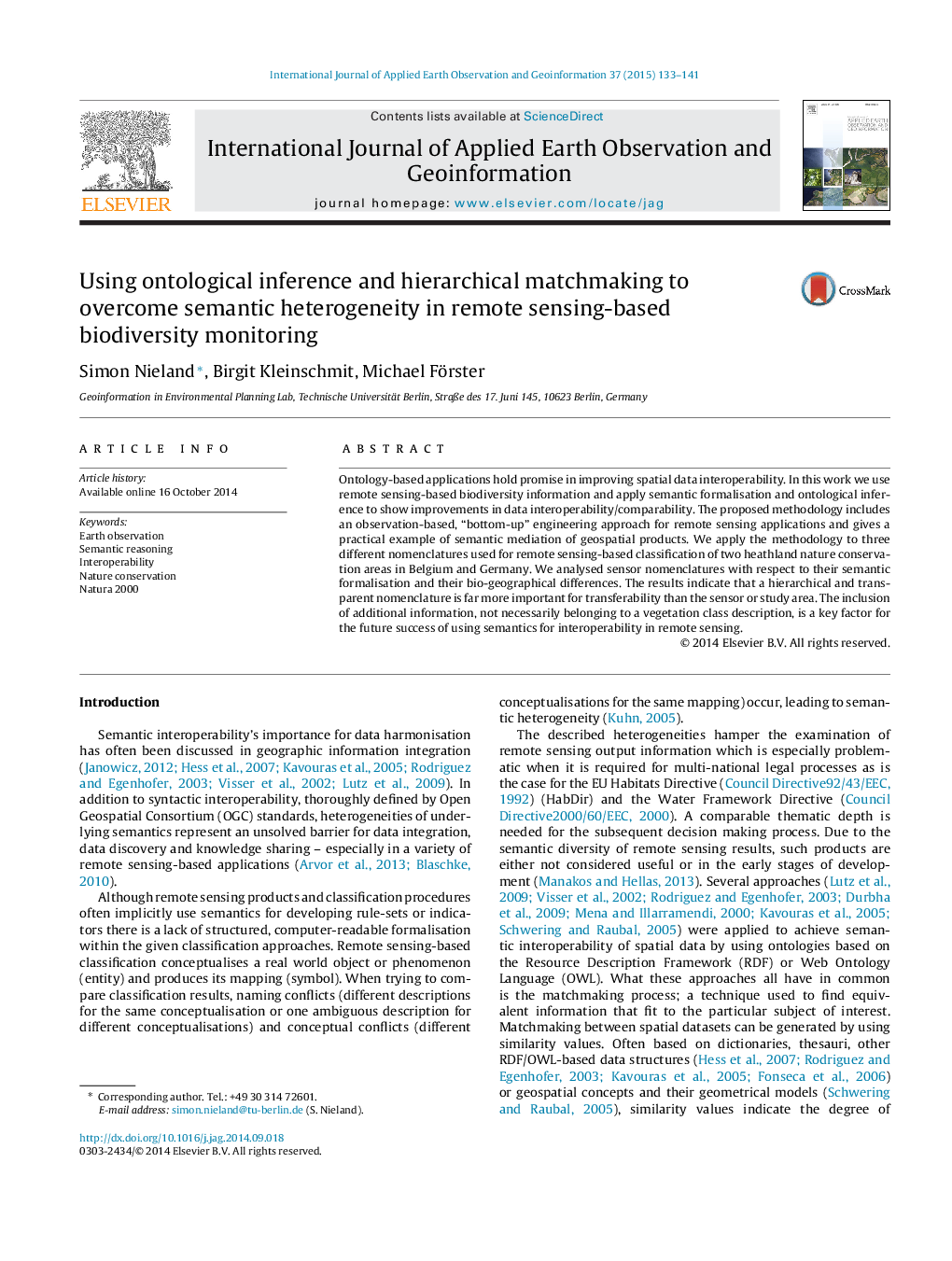| Article ID | Journal | Published Year | Pages | File Type |
|---|---|---|---|---|
| 6348797 | International Journal of Applied Earth Observation and Geoinformation | 2015 | 9 Pages |
Abstract
Ontology-based applications hold promise in improving spatial data interoperability. In this work we use remote sensing-based biodiversity information and apply semantic formalisation and ontological inference to show improvements in data interoperability/comparability. The proposed methodology includes an observation-based, “bottom-up” engineering approach for remote sensing applications and gives a practical example of semantic mediation of geospatial products. We apply the methodology to three different nomenclatures used for remote sensing-based classification of two heathland nature conservation areas in Belgium and Germany. We analysed sensor nomenclatures with respect to their semantic formalisation and their bio-geographical differences. The results indicate that a hierarchical and transparent nomenclature is far more important for transferability than the sensor or study area. The inclusion of additional information, not necessarily belonging to a vegetation class description, is a key factor for the future success of using semantics for interoperability in remote sensing.
Related Topics
Physical Sciences and Engineering
Earth and Planetary Sciences
Computers in Earth Sciences
Authors
Simon Nieland, Birgit Kleinschmit, Michael Förster,
